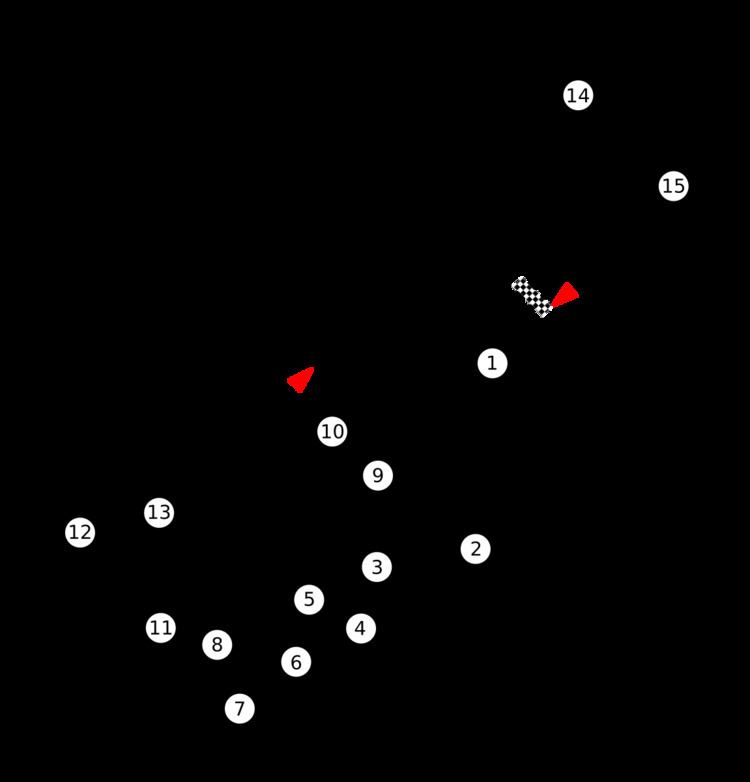Official name Winston Western 500 | ||
 | ||
Date January 19, 1975 (1975-January-19) Course Permanent racing facility2.700 mi (4.345 km) Distance 191 laps, 500.4 mi (805.3 km) Weather Warm with temperatures approaching 79 °F (26 °C); wind speeds up to 10.9 miles per hour (17.5 km/h) | ||
The 1975 Winston Western 500 was a NASCAR Winston Cup Series racing event that took place on January 19, 1975, at Riverside International Raceway in Riverside, California. A companion race known as the Permatex 200, in the Late Model Sportsmen Series, would be held one day prior to this event on the same track.
Contents
The 1975 NASCAR Winston Cup Series would jump start Richard Petty into a different breed of stock car driver; even though his 1975 Dodge Charger muscle car vehicle would be as comfortable to drive on the race track as a boxcar on the railroad tracks.
This was the first race that the vaunted Chevrolet Malibu Laguna S-3 was eligible for competition, although its use began in earnest at the 1975 Daytona 500.
Summary
35 drivers managed to qualify for this 191-lap race that spanned a total distance of 500.4 miles or 805.3 kilometres. Fifty-five thousand people would attend a live racing event that would last for five hours and four minutes. Ivan Baldwin would become the last-place finisher due to engine problems on the fourth lap. Bobby Allison and David Pearson both chased each other for the lead lap before Allison would win by nearly 23 seconds over Pearson. Other drivers who had the lead at certain points in the race were Sonny Easley and Ray Elder. More than half the field failed to finish the race due to problems ranging from engine difficulties to oil-related problems and even the occasional transmission problem. Only 13 cars managed to finish the race. Since it was the first race of the year, most of the teams were feeling their way through.
The broadcasting range provided by the network was questionable at best despite being televised specifically for cable television. Most of the Northern United States (including New Jersey) were nearly oblivious to the events that occurred. The results were shown primarily through tape-delayed highlight shows and amateurish NASCAR magazines.
Speeds up to 110.382 miles per hour or 177.643 kilometres per hour were seen during solo qualifying runs while actual race speeds were merely 98.267 miles per hour or 158.145 kilometres per hour. Richard Petty would spend 19 laps on pit road because his delicate ride had a tendency to hit walls; faulty aerodynamics were considered to blame after the race was over. While multi-car teams were becoming the norm, a significant amount of "lone wolf" owners still were operating in 1975.
Prize amounts earned for each driver ranged from $14,735 ($65,583.05 when adjusted for inflation) to $520 ($2,314.43 when adjusted for inflation); with a grand total of $97,075 being handed out by the official NASCAR treasurer ($432,064.80 when adjusted for inflation). Ron Esau, Don Puskarich, and Bill Schmitt would make their introductions to NASCAR in this race while Dick Bown would hang up his racing gloves after this event.
